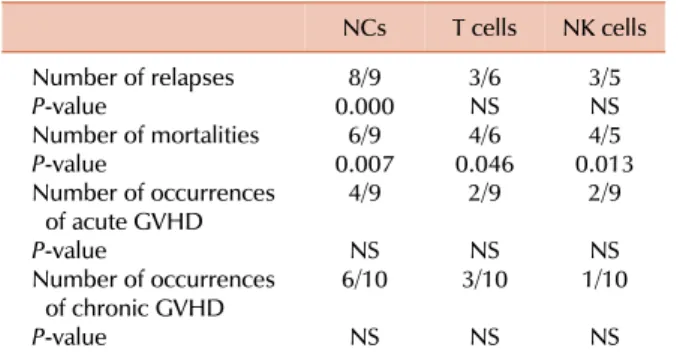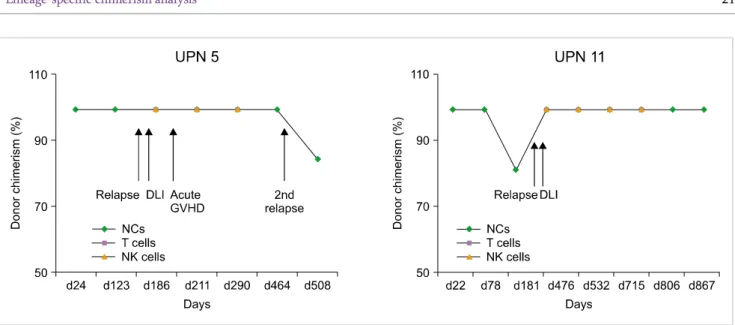Lineage-specific chimerism analysis in nucleated cells, T cells and natural killer cells after myeloablative allogeneic hematopoietic stem cell transplantation
전체 글
수치



관련 문서
In this work, processing techniques for producing microcellular silicon carbide with cell densities greater than 10 9 cells/㎤ and cells smaller than 30㎛ have
Meterials and Methods: Our study involved three stem cell sources-subacromial bursal tissue, bone marrow, and umbilical cord-derived stem cells. Under consent we
Recent stem cell studies have reported that cultured hematopoietic stem cells (HSCs) are reactivated through fetal hemoglobin expression by treatment with
Regulatory T (Treg) cells are a subset of CD4+ T cells whose function is to suppress immune responses and maintain self-tolerance, therefore they have a central
Approved clinical use of bone marrow stem cells for myocardial infarction treatment... Cardiac
Often found connected to other molecules on the outsides of cells --- cellular recognition, cell signaling, cell
• Generation of different specialized kinds of cells from zygote (fertilized egg) or other precursor cells.. – Generate blood cells, muscle
▪ When we control the potential of the working electrode with respect to the reference, it is equivalent to controlling the energy of the electrons within the